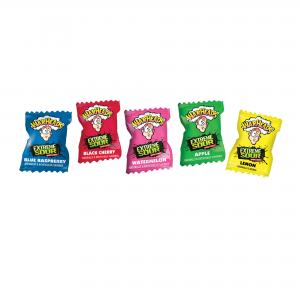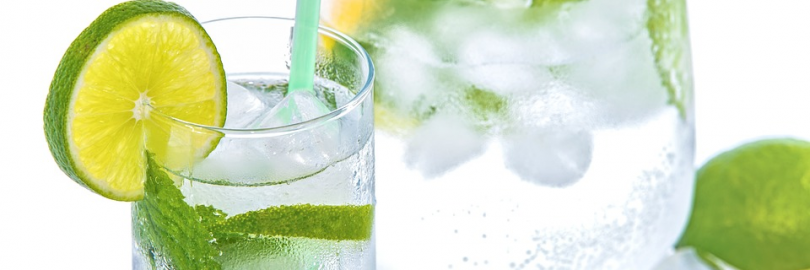
10 Sourest Food in the World, Ranked 2025
Pucker up! As a more adventurous flavor, sour is trending!
One important aspect of eating is the taste of food and it can be categorized into five flavours: sweet, bitter, sour, spicy and salty.
As cloyingly sweet flavors fall out of favor, sour flavors are emerging across categories as the antithesis of sweet.
Millennials and Generation Z have embraced the kinds of sour foods and beverages that other generations were never exposed to during their formative eating and drinking years.
Why this peaked interest in sour foods? Sour is trending as a flavor in food because sour stretches over many food sensations, like an after burn. And once you get hooked on it, it’s tough to go back to bland.
Showing 90% positivity from consumers, products featuring sour have become a favorite in markets across the board, sweet and sour treats included.
What can I eat to get a sour taste?
#1. Sour candy
From social media challenges to party themes, special gifts to everyday delights – a wide variety of sour candies are in the pop culture limelight.
Love them or hate them – every single kid (and a heck of a lot of adults) must try the sourest of sour candies and once they do, most of them keep coming back for more. It’s not just how they taste.
All the sour candy activities and challenges create so much excitement around sour candy, they are the most talked about candy online. According to Buzzfeed there are two kinds of people in the world – those who worship sour candy and those who cannot stand it.
Sour candy sees steady growth, thanks to rise in chewy candy, consumers' increasingly adventurous palates. The market leader in non-chocolate chewy candy brands of America is Skittles, known for its mouth-puckering sour candy. After private label brands, Starburst and Sour Patch Kids – sour candy giants - are the next highest selling brands.
MORE FROM
#2. Sour fruit
Ever wonder what makes your favorite sour candy so deliciously tart? The secret lies in using ingredients that are naturally sour such as lemon, lime, green apples, raspberries, and more.
Plus, the addition of a few organic acids contributes to the super sour taste and unique flavor of the candy. One of the most common ingredients is citric acid, which commonly exists in fruits such as lemons and grapefruits. It is an antioxidant that lends the tart flavor to sour candy. Other organic acids such as malic, ascorbic, fumaric, and tartaric acids are often used to prepare sour candy, each of which lends a slightly different yet generally tart flavor.
Having said that, in order to obtain the most original sour taste, we should eat the most sour fruit!
This will be the main content of the following article: Ranking of the most sour fruits in the world!
Money Saving Tips First:
In fact, you can save up to 100% on online shopping at home and abroad!
Such a high amount of cash back comes from Extrabux (What is Extrabux?), it also offers coupon codes and recent promotions, and brings together 10,000+ sites (US, China, UK, Japan, Australia , Germany, France, Italy, etc.).
Just sign up for an Extrabux account and earn exciting cash back every time you place an order via the relevant link. Sign-Up Bonus: Join for FREE & Earn $20 Welcome Bonus today! Then earn $5 Friend Referral Bonus!
Whether you are buying cheap domestic products, international luxury goods, or buying mobile phones, computers, refrigerators, washing machines, clothes, shoes, bags, mother and baby products, snacks, drinks, or booking air tickets, hotels, car rentals, or registering services and memberships , you can save money on all related purchases - save $1,000 a year!
#3. Fermented Finds & Vinegary Varieties
Health & wellness has become a priority for many consumers, which has led to increased popularity for fermented, vinegar-based, probiotic and prebiotic foods.
Other recent scientific studies tell a punchier story: Those who eat sour fermented foods have less anxiety, more resilience and are likelier to take risks.
Fermented foods can be really acidic but are not just sour. Something like sourdough is not just sour. It also brings more complexity. There's much more awareness and acceptance of complex food throughout the United States.
A preference for sourness is arguably an evolutionary advantage. It can lead to greater intake of vitamin C — squeezes of lime and lemon were routinely added to the drinks of sailors on long voyages in the 18th century to ward off scurvy — and probiotic bacteria, via fermented foods, to boost digestive health.
Sour flavors offer a layered richness in flavor profiling, and that is a big deal for foodies and chefs who like to stretch the culinary limits when developing intense flavors.
On the other hand, fermented foods do have potential health benefits, such as improved digestion and immunity.
Many Americans have been introduced to sour tastes by ethnic dishes, especially Asian cuisine that traditionally uses sour flavors. Kimchee, in particular, has contributed to the growing American taste for sour.
This will also be an important content of the following article: Ranking of the most sour vegetables in the world!
#4. Sour drinks and alcohol
There’s much more life to sour than just candy. From hybrid alcoholic drinks to kombucha and apple cider vinegar, consumers feel they are consuming something good for them when it features sour.
As interest grows in sour over sweet in food and drink, more fermented products will find their way onto menus and shelves.
For a hint of tartness, many classic cocktails include the addition of lime, lemon, or other sour components. From whiskey sours to creatively flavored margaritas and mixed drinks, the opportunities for sour flavor additions in alcohol are seemingly endless. Simple consumer favorites can be dressed up or dressed down to create the perfect level of sour.
MORE FROM
10 Sourest Food in the World, Ranked 2025
The most acidic foods below include fruits and vegetables.
#1. Lemon

Citrus fruits are likely to be one of your first experiences with sour foods.
Lemons and limes — along with kumquats, oranges, tangerines, citrons, and grapefruit — all belong to the broader citrus fruit category.
Citrus fruits contain high amounts of citric acid, which gives them their characteristic lip-puckering flavor and mouth-watering taste.
Lemons and limes are among the most popular citrus fruits in the world. Known for their acidic, sour taste, these two fruits are featured in various culinary applications around the world.
Perhaps one of the most obvious differences between lemons and limes is their appearance. Lemons are usually bright yellow, while limes are usually bright green. Limes are also smaller and rounder than lemons.
However, lemons tend to be on the sweet side, while limes are often on the bitter side.
The juice of lemons and limes squeezed from the fruits contained the most citric acid (48 and 46 g/L, respectively).
The juice of the lemon is about 5% to 6% citric acid, with a pH of around 2.2, giving it a sour taste.
Lemon juice contains slightly more citric acid than lime juice, nearly twice the citric acid of grapefruit juice, and about five times the amount of citric acid found in orange juice.
Lemon juice is used to make lemonade, soft drinks, and cocktails. In the United Kingdom, lemon juice is frequently added to pancakes, especially on Shrove Tuesday.
The largest production of lemons is in Asia, mainly Northeast India (Assam), Northern Myanmar or China.
#2. Lime
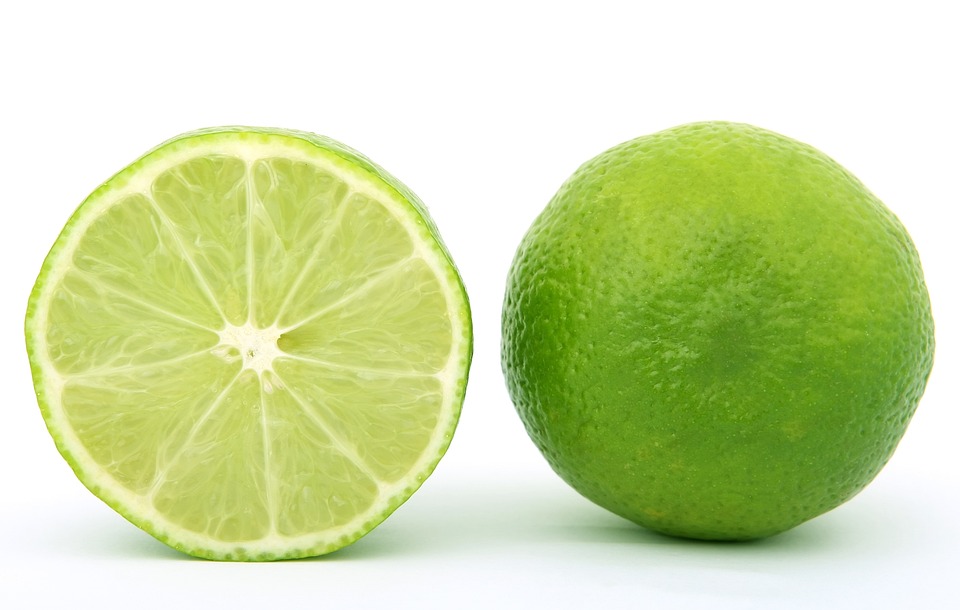
A lime is a citrus fruit, which is typically round, green in color, 3–6 centimetres in diameter.
Of the two types of limes commonly found on the market today—the Key lime (Citrus × aurantiifolia) and the Persian lime (Citrus × latifolia)—the Key lime is smaller, more aromatic and more acidic.
Lime juice may be squeezed from fresh limes, or purchased in bottles in both unsweetened and sweetened varieties.
Lime juice is used to make limeade, and as an ingredient in many cocktails.
For example, fresh-squeezed lime juice is a key ingredient in margaritas, although lemon juice is sometimes substituted. It is also found in many rum cocktails such as the Daiquiri, and other tropical drinks.
In cooking, lime is valued both for the acidity of its juice and the floral aroma of its zest. It is a common ingredient in authentic Mexican, Vietnamese and Thai dishes.
How acidic is it?
Lime juice contains slightly less citric acid than lemon juice (about 48 g/L), nearly twice the citric acid of grapefruit juice, and about five times the amount of citric acid found in orange juice.
#3. Tamarind
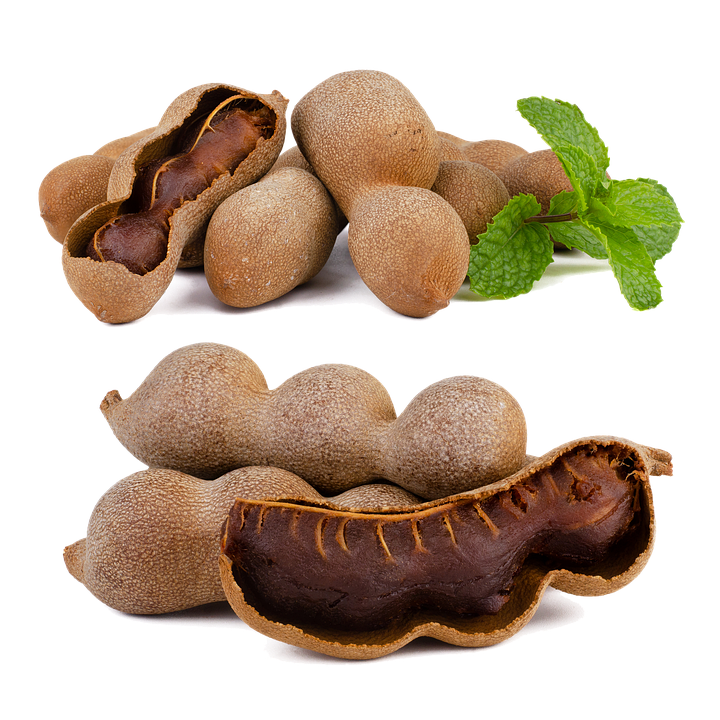
Tamarind is a leguminous tree bearing edible fruit that is indigenous to tropical Africa and naturalized in Asia.
The fruit has a fleshy, juicy, acidic pulp. The fruit pulp is edible.
The hard green pulp of a young fruit is considered by many to be too sour. It is mature when the flesh is coloured brown or reddish brown.
As the fruit matures it becomes sweeter and less sour and the ripened fruit is considered more palatable.
The fruit is best described as sweet and sour in taste, and is high in tartaric acid, sugar, B vitamins, and, unusually for a fruit, calcium.
In Western cuisine, tamarind pulp is found in Worcestershire sauce and HP Sauce.
Its acidity is somewhat milder than that of lemon and lime and lacks the hints of bitterness found in citrus.
Tamarind sweet chutney is popular in India and Pakistan as a dressing for many snacks and often served with samosa.
#4. Tart cherry

Prunus cerasus, commonly called sour cherry, tart cherry, or dwarf cherry, is a species of cherry.
It is closely related to the sweet cherry (Prunus avium), but has a fruit that is more acidic.
Sweet cherries are often eaten fresh as a snack. They are mostly sold fresh in supermarkets during the summer, and are harder to find when out of season.
Tart cherries, on the other hand, are often dried, pressed into cherry juice or concentrate, or frozen and can be easily found and enjoyed year-round. Tart cherries are commonly used in baking and cooking because of their tart taste, making them the preferred cherry for cherry pies!
Montmorency tart cherries are the most popular variety of tart cherry, primarily grown in Michigan!
Many research studies have shown that Montmorency tart cherries provide anti-inflammatory qualities, as well as the benefits of muscle recovery and pain relief from conditions like arthritis.
Sour cherries are particularly popular in Turkey, especially in the form of vişne suyu (sour cherry nectar), a widely-consumed beverage, and vişne reçeli (sour cherry jam), often eaten as part of a traditional kahvaltı (Turkish breakfast) or mixed into plain yoghurt.
Sour cherries contain high amounts of malic acid, which is what gives them their sour taste.
#5. Cranberry

Cranberries are low creeping shrubs or vines, up to 2 m long and 5 to 20 cm tall; they have small evergreen leaves.
The fruit is a berry larger than the plant's leaves; it is initially pale green and turns red when ripe.
It is edible, but the sourness usually overpowers its sweetness.
Cranberries are mainly produced in the United States, Canada and Chile, and these three countries together account for 97% of the world's total production.
Because fresh cranberries are hard, sour, and bitter, about 95 percent of cranberries are processed and used to make cranberry juice and sauce.
Cranberry juice is often sweetened or blended with other fruit juices to reduce its natural tartness. With a teaspoon of sugar per ounce, cranberry juice cocktails are even sweeter than sodas, which have been linked to obesity.
Usually cranberries as fruit are cooked into a compote or jelly, known as cranberry sauce.
Cranberry sauce is a traditional turkey accompaniment to Christmas and Thanksgiving dinners in the US and Canada, as well as Christmas dinner in the UK.
Harvested in September and October, fresh cranberries are typically sold packaged in bags holding 3 cups of berries.
Less commonly, fresh cranberries are used to add tartness to savory dishes like soups and stews.
#6. Gooseberry
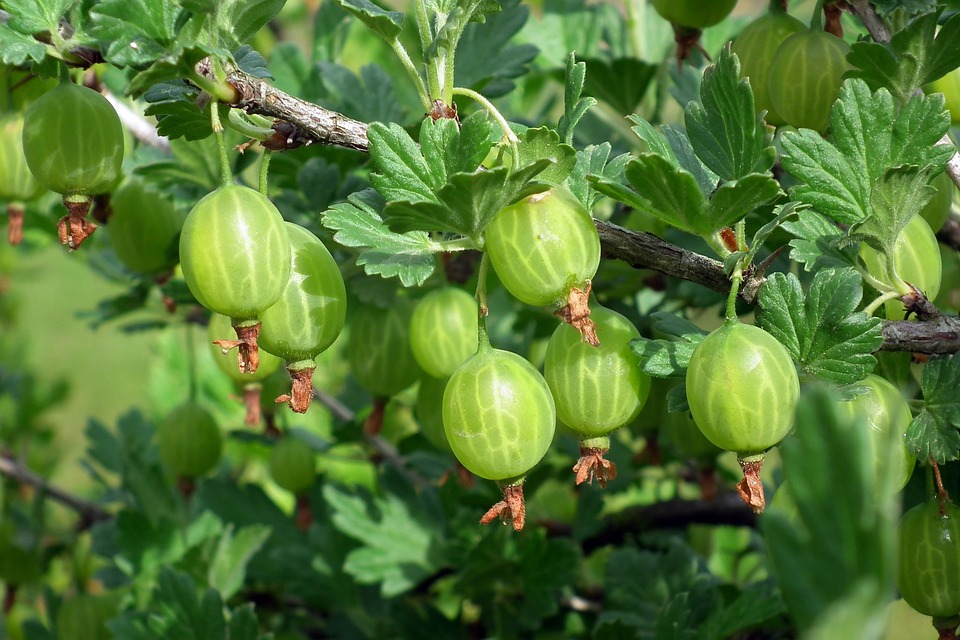
Native to temperate regions of the Northern Hemisphere, gooseberries are extremely hardy and are grown almost as far north as the Arctic Circle.
The most common commercial fruits are the English gooseberries (Ribes uva-crispa), popularly called grossularia.
The most useful native North American species is the American, or smooth, gooseberry (Ribes hirtellum), found wild across the United States; improved varieties are widely cultivated.
They are green while still young and turn yellowish when they are ripened. Early pickings are generally sour and more appropriate for culinary use.
This includes most supermarket gooseberries, which are often picked before fully ripe to increase shelf life.
They contain several organic acids, including citric and malic acids, which are responsible for their tart flavor.
Gooseberries are naturally tart, so the best ways to use them involves cooking them with added sugar to make jellies, sauces, preserves, pies and other desserts, or wine.
Most describe them as similar in taste and texture to grapes, but more acidic.
The yellow or red gooseberries have more sugar and are tastier for raw snacking.
#7. Star fruit
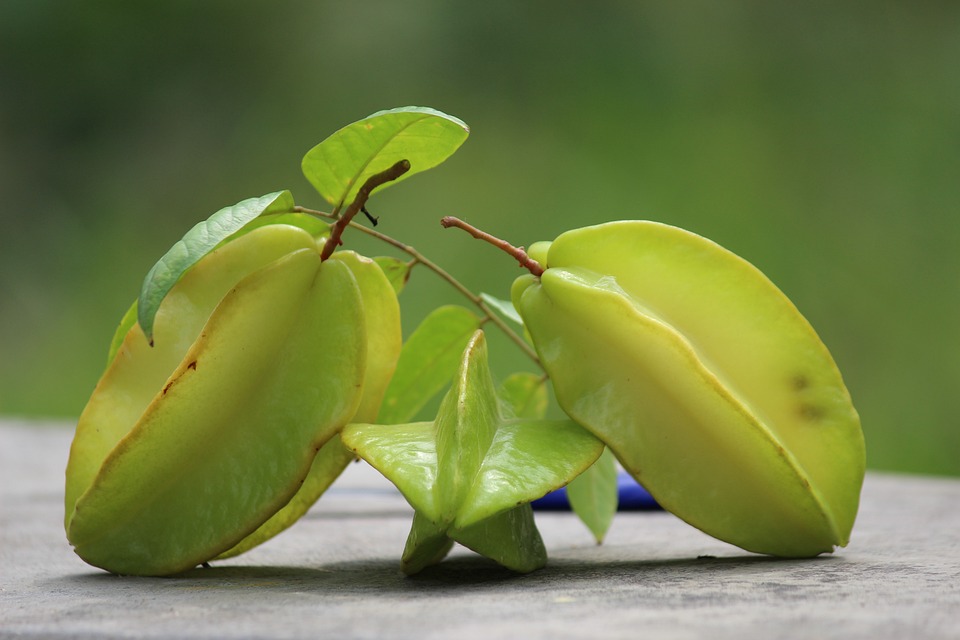
Carambola, also known as star fruit, is the fruit of Averrhoa carambola.
The edible fruit has distinctive ridges running down its sides (usually 5–6).
When cut in cross-section, it resembles a star, giving it the name of star fruit.
The entire fruit is edible, usually raw, and may be cooked or made into relishes, preserves, garnish, and juices.
There are two main types of carambola: the small sour type and the larger sweet type.
The most common cultivars grown commercially include the sweet types "Arkin" (Florida), "Yang Tao" (Taiwan), "Ma fueng" (Thailand), "Maha" (Malaysia), and "Demak" (Indonesia) and the sour types "Golden Star", "Newcomb", "Star King", and "Thayer" (all from Florida). Some of the sour varieties like "Golden Star" can become sweet if allowed to ripen.
They have a tart, sour undertone, and an oxalic acid odor.
Carambola fruits contain oxalic acid and the neurotoxin caramboxin. Consuming large quantities of the fruit, especially for individuals with some types of kidney disease, can result in serious adverse health effects.
The taste is difficult to match, but it has been compared to a mix of apple, pear, grape, and citrus family fruits. Unripe star fruits are firmer and sour, and taste like green apples.
In the Philippines, unripe carambolas are eaten dipped in rock salt. In Thailand, they are cooked together with shrimp.
#8. Rhubarb
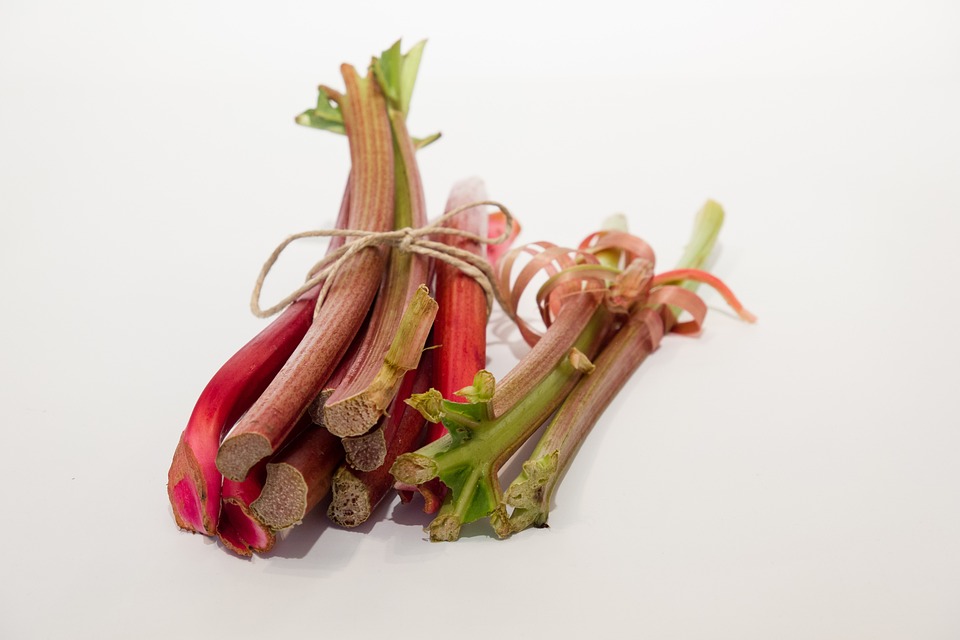
Rhubarb is a unique vegetable, as it has a strong, tart taste.
Although rhubarb is a vegetable, it is often put to the same culinary uses as fruits.
The leaf stalks can be used raw, when they have a crisp texture (similar to celery, although it is in a different family), but are most commonly cooked with sugar and used in pies, crumbles and other desserts.
In the leaf stalks, the proportion of oxalic acid is about 10% of the total 2–2.5% acidity, which derives mainly from malic acid.
Rhubarb can be dehydrated and infused with fruit juice. In the United States, it is usually infused with strawberry juice to mimic the popular strawberry rhubarb pie.
#9. Sauerkraut

Fermented foods have a long history in many cultures, with sauerkraut being one of the most well-known instances of traditional fermented moist cabbage side dishes.
Although "sauerkraut" is from a German word (Sauerkraut), the dish did not originate in Germany. Some claim fermenting cabbage suan cai was already practised in the days of the building of the Great Wall of China and that the practice was likely transmitted from China to Europe by the Tartars.
Sauerkraut is finely cut raw cabbage that has been fermented by various lactic acid bacteria.
It has a long shelf life and a distinctive sour flavor, both of which result from the lactic acid formed when the bacteria ferment the sugars in the cabbage leaves.
It is one of the best-known national dishes in Germany.
#10. South Asian pickles
South Asian pickles, also known as Achaar (sometimes spelled as aachaar or achar), are popular across the Indian subcontinent, with many regional variants.
Some commonly used ingredients are limes, lemons, mangoes, ginger, and eggplants.
In India, there are two main types of pickles: pickles made with sesame or mustard oil, and pickles made without oil.
Pickles without oil use salt to draw out the moisture from green mangoes or lemons to create a brine. A mixture of lemon or lime juice with salt or traditional ganne ka sirka (sugarcane vinegar) may also be used as brine.
These pickles smell and taste sour and appetizing!
#11. Pickle
A pickled cucumber (commonly known as a pickle in the United States and Canada and a gherkin in Britain, Ireland, South Africa, Australia, and New Zealand) is a usually small or miniature cucumber that has been pickled in a brine, vinegar, or other solution and left to ferment for some time, by either immersing the cucumbers in an acidic solution or through souring by lacto-fermentation.
During the Victorian era, pickles were considered a luxury food, meaning households that served pickles were wealthy enough to have servants or staff who could prepare pickles.
In the United States, pickles are often served as a side dish accompanying meals.
Pickles may be used as a condiment on a hamburger or other sandwich or a sausage or hot dog in chopped form as pickle relish.
| Top 10 Spiciest Doritos in the World 2025 |
| Top 10 Spiciest Hot Sauces in the World 2025 That Still Taste Good |
| 18 Best Spicy Corn or Tortilla Chips with Heat and Flavor |
| 14 Most Buttery Microwave Popcorn in the World, Ranked 2025 |
| Where To Buy Gucci The Cheapest in 2025? (Cheapest Country & Place, Discount, Price, VAT Rate & Tax Refund) |
| Top 10 Best Sites to Buy Cheap CD Keys/Game Keys 2025 (For Steam, Origin, Uplay, Battle.net, GOG, PSN, XBOX) |

Extrabux is an international cashback shopping site, offering up to 30% cashback from 10,000+ Stores!
Squarespace, SkinStore, MATCHESFASHION, The Wall Street Journal, NordVPN, Visible, Armani Exchange, Sam's Club, PUMA, AliExpress, Card Cash, NET-A-PORTER, Udacity, Udemy, Selfridges, LOOKFANTASTIC, Vimeo, Coach Outlet, lululemon, PrettyLittleThing, Booking.com, Ripley's Aquarium, iHerb, Groupon, etc.
Join to get $20 welcome bonus now! (How does Welcome Bonus work?)
Recommendation
-

Where to Watch Chinese Short Dramas with English Subs: The Best Free and Paid Apps & Sites (2025)
-

Supreme LV Backpack Real vs. Fake Guide 2025: How Can I Tell If It Is Original?
-

U.S. Polo Assn. Cashback, Coupon Codes, and Savings Guide
-

The North Face vs. Columbia vs. Patagonia: Which is the Best Outdoor Gear Brand?
Up to 8% Cashback!
-

Chow Sang Sang Shopping Guide: Get Discounts & Cashback on Unique Holiday Gifts
Top in 3hrs
DoorDash vs. Uber Eats vs. Grubhub vs. Postmates: Ultimate Comparison 2025
for Drivers, Restaurants and Customers!

